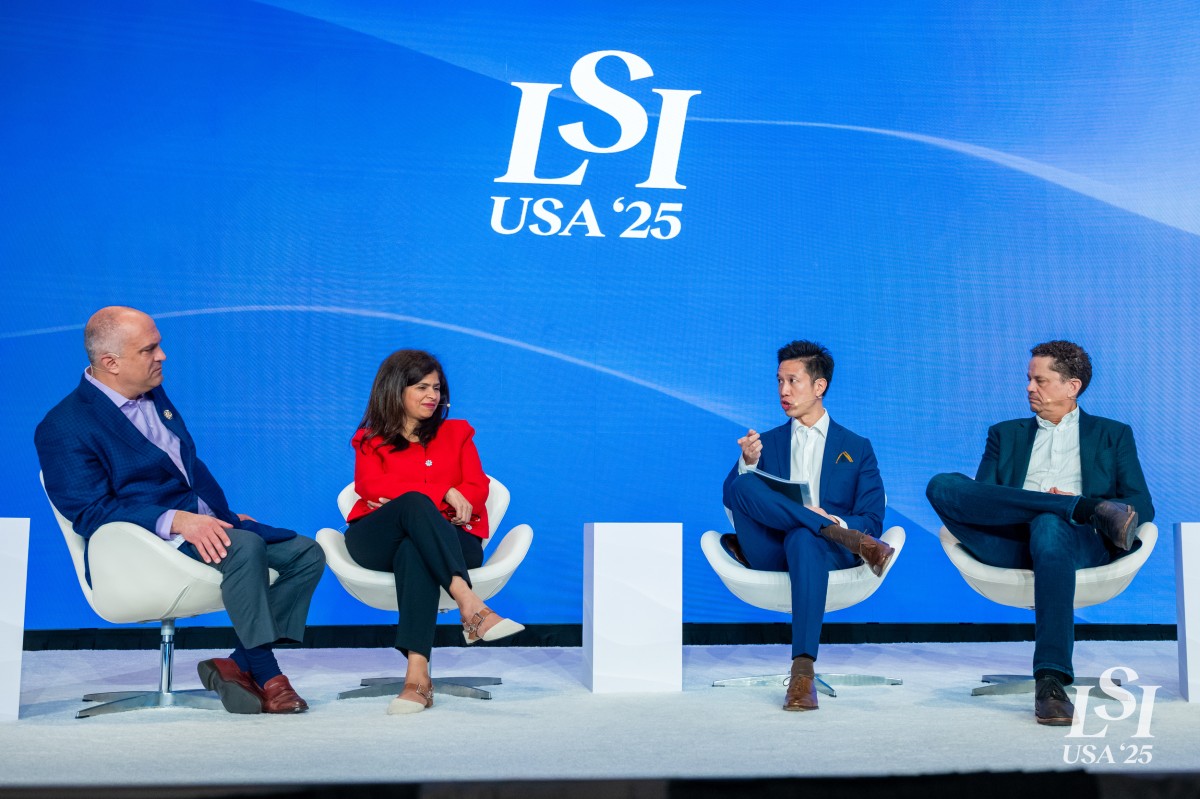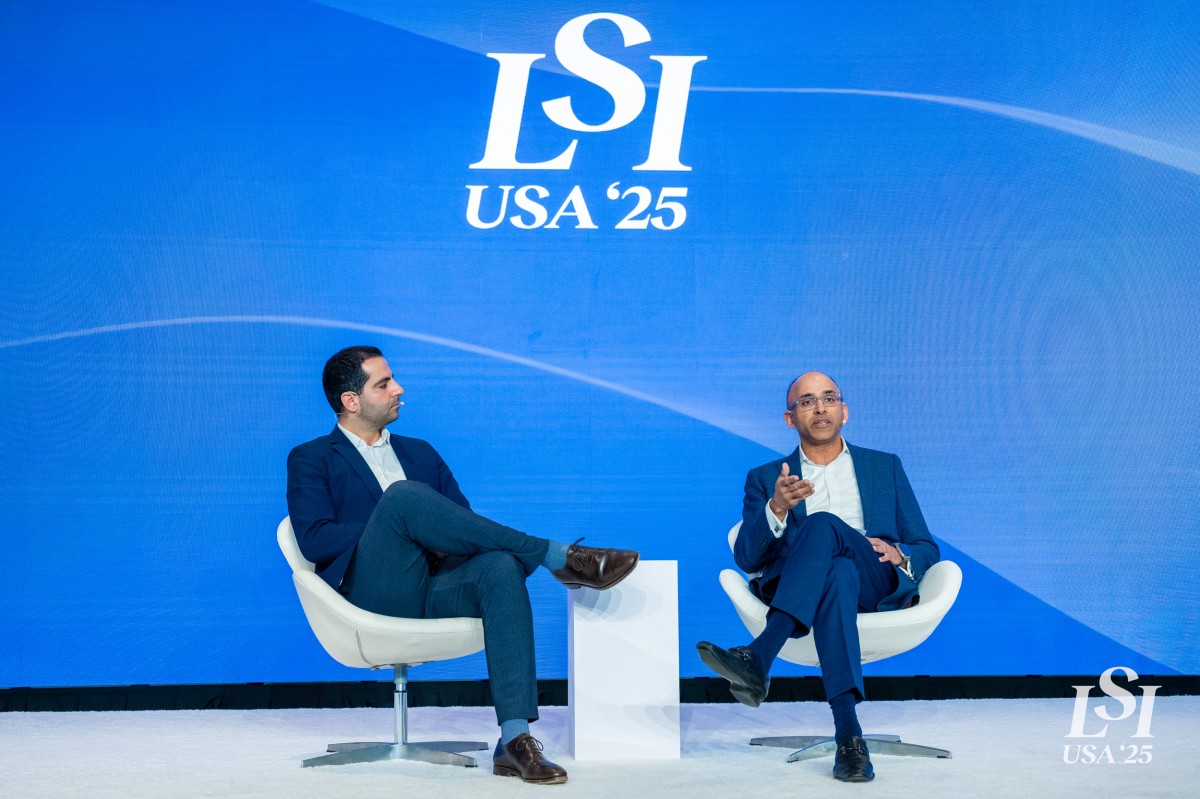
Hypertension affects more than 1.2 billion people globally and remains the number one contributor to death each year in the United States. Yet despite a host of pharmaceutical options, 75% of those diagnosed with hypertension still live with uncontrolled blood pressure, even with medication. It’s clear that new solutions are needed—and device-based therapy for hypertension is emerging as one of the most promising frontiers.
During a Signature Series at LSI USA ’25, David Hochman (Orchestra BioMed, Inc.) and Chris Eso (Medtronic) sat down to discuss how device-based innovation and strategic medtech partnerships are reshaping the hypertension treatment landscape. Their conversation offered an in-depth look at the clinical rationale, commercial strategy, and future direction of this critical area of innovation.
The Case for Device-Based Therapy for Hypertension
“If you think about hypertension, it’s a global healthcare crisis,” said Eso. “Half of this auditorium probably has it. It’s bigger than diabetes, bigger than many other diseases from a cardiovascular perspective.”
Eso traced Medtronic’s entry into hypertension therapeutics back to its 2009 investment in Ardian, the pioneer behind renal denervation devices. At the time, hypertension management was still viewed almost exclusively through a pharmaceutical lens. Devices weren’t yet considered part of the solution. However, early clinical learnings revealed significant gaps that medication alone couldn’t fill—particularly in adherence.
“75% of people with hypertension are uncontrolled even when they’re on meds,” noted Eso. “There are side effects. There are compliance issues. Taking three to five medications every day for the rest of your life—it’s tough. Device-based therapies offer an alternative that doesn’t rely on daily compliance.”
Hochman agreed, framing hypertension as “the trunk of the tree” that leads to heart attack, stroke, heart failure, and kidney disease. Addressing it effectively, he emphasized, means addressing the root cause of downstream morbidity and mortality.
Building a Portfolio Approach: Renal Denervation and Beyond
Medtronic’s flagship device-based therapy for hypertension has already made headlines with recent FDA approval, ongoing reimbursement milestones, and broadening clinical adoption. “We’ve now treated over 30,000 patients with our device,” Eso shared. “By October, we expect full national coverage determination (NCD) notification and reimbursement to be in place.”
Commercialization, however, required more than regulatory success. It demanded ecosystem building. “We learned early on that it’s not just about the device,” Eso explained. “You need to create the right clinical environment to find the patients, treat them, and manage them over time.”
Looking ahead, Medtronic is expanding its strategy to address multiple therapeutic targets. Eso outlined initiatives in multi-organ denervation and emphasized that ongoing medtech innovation will continue to unlock more opportunities to treat resistant hypertension.
“We made small acquisitions around IP and assets that bolster our overall offering,” he said. “We believe multiple device-based options are going to be needed.”
AVIM: Leveraging Cardiac Pacing for Hypertension Control
A major highlight of the session was the discussion of atrioventricular interval modulation therapy (AVIM)—a novel approach developed in collaboration with Orchestra BioMed. AVIM uses a standard dual-chamber pacemaker, but through modified programming, it directly reduces blood pressure by altering cardiac preload and autonomic nervous system tone.
“AVIM is an algorithm,” Hochman explained. “It modulates the AV timing to immediately lower blood pressure, while intermittent longer intervals prevent a sympathetic nervous system response.”
Importantly, AVIM achieves this without changing the hardware or implant procedure—making it an elegant extension of the cardiac pacing systems that Medtronic already dominates.
“We don’t change the device,” Hochman said. “We simply add an algorithm.”
Eso sees this as a perfect fit for Medtronic’s broader strategy. “What I like about it is twofold,” he said. “First, it addresses an existing patient population—the pacemaker population—with an additional therapeutic benefit. Second, it’s always on. Just like renal denervation, it’s there, active, and not dependent on the patient remembering to do something.”
Always-On Therapies: A New Standard for Hypertension Management
Both renal denervation and AVIM share a critical advantage over pharmaceutical therapies: they’re always active and independent of patient behavior.
“Medication wears off,” Eso pointed out. “When you sleep, when you miss a dose, it goes away. But device-based therapies like RDN and AVIM maintain blood pressure control 24/7.”
Hochman agreed, noting that consistency is critical for reducing cardiovascular risk. “With AVIM, we saw phenomenal results in clinical trials—high response rates, double-digit reductions in ambulatory blood pressure, and a strong safety profile.”
The BackBeat pivotal trial, now underway, is designed to further validate AVIM’s efficacy and set the stage for broader commercialization.
“We’re running a 500-patient global double-blind, randomized study,” Hochman said. “It’s an exciting therapy and an exciting collaboration.”
The Future of Device-Based Therapy for Hypertension
As hypertension continues to drive the global cardiovascular disease burden, device-based therapy for hypertension offers a scalable, impactful solution. With renal denervation advancing commercially and new approaches like AVIM poised to follow, the treatment paradigm is shifting from medication-only models to integrated device-based strategies.
For Medtronic, this is not just about incremental innovation—it’s about medtech portfolio optimization geared at tackling the world’s most pervasive health crisis from multiple angles. As Eso put it: “We’re creating therapies that are always on, always working, and always helping patients stay in control.”
Want more insights from the leaders shaping the future of medtech? Join us at LSI Asia ‘25, June 10–13, in Singapore.
-Joe-Mullings,-Andrew-ElBardissi,-Ramin-Mousavi,-Addie-Harris,-and-Josh-Makower.png)



